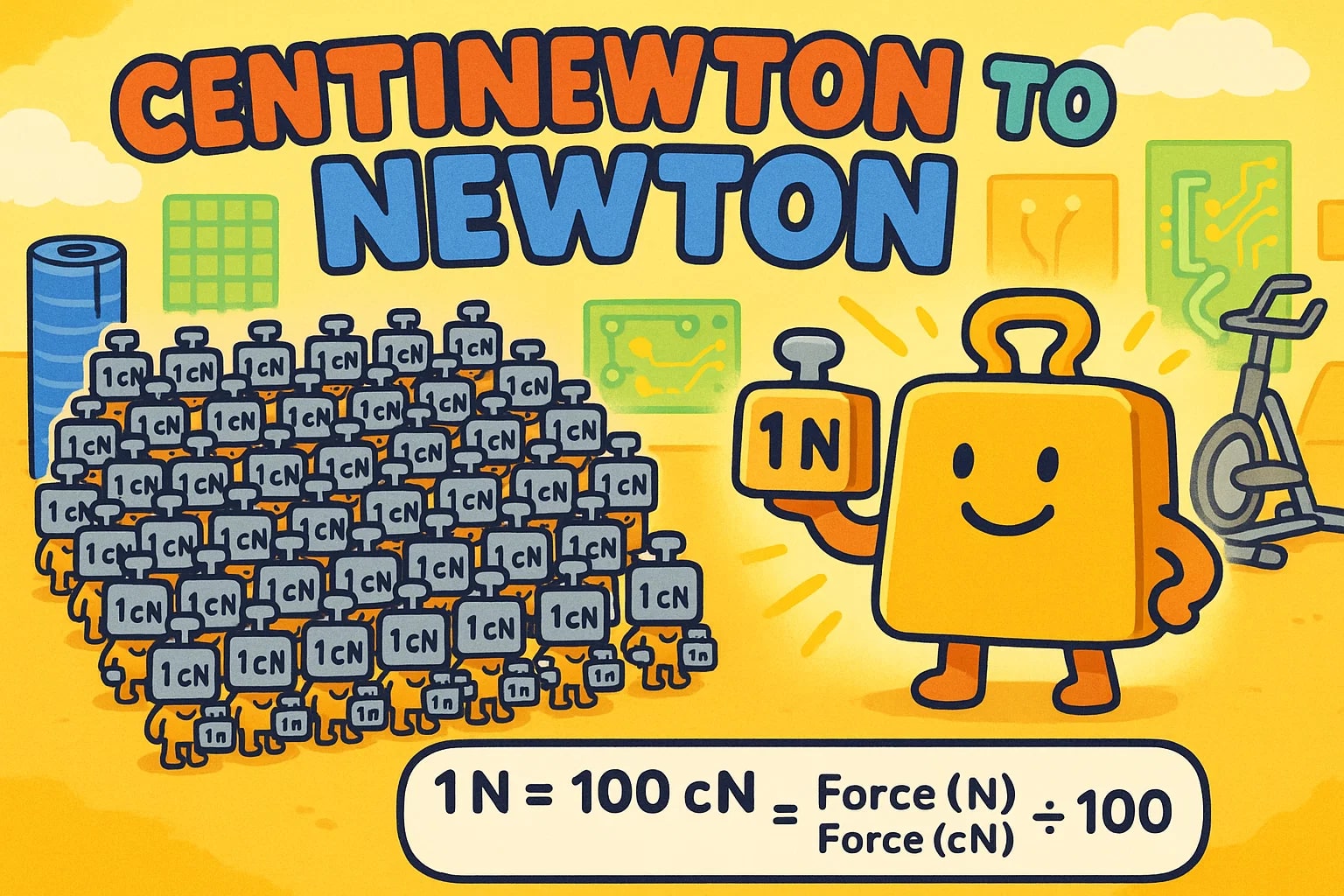Centinewton to Newton – How to convert cN to N
Forces can range from the delicate pull of a single thread to the thrust of a rocket. The centinewton and newton both measure force, but they serve very different roles. Here’s how to convert between them, and why engineers and scientists rely on both.
The centinewton (cN): precision for the smallest forces
A centinewton is one-hundredth of a newton (1 cN = 0.01 N). The prefix “centi-” means 1/100, making this unit ideal for contexts where even small variations in force matter.
Textile and packaging industries often measure in centinewtons, as fibers, films, and seals can fail under forces as low as 10 cN to 500 cN. Using cN avoids awkward decimals like 0.23 N when documenting test results.
The newton (N): the universal base unit
The newton is the SI unit of force, defined as the amount needed to accelerate 1 kg by 1 m/s². It’s the standard for physics, engineering, and industry — used to describe everything from the push of a hand on a door to the lift generated by an aircraft wing.
For everyday and large-scale calculations, the newton keeps results manageable. But when the forces are tiny, converting to centinewtons simplifies communication.

Converting cN to N
The relationship between the two is straightforward:
1 N = 100 cN
Force (N) = Force (cN) ÷ 100
Example calculation:
A yarn sample breaks at 320 cN. To express this in newtons:
320 cN ÷ 100 = 3.2 N.
Thus, 320 cN = 3.2 N.
Need other force conversions? Check Jetcalculator’s Force Converter or our full range of Conversion tools
Did you know?
-
The centinewton is commonly used in ISO textile testing standards, where most fibers break between 50 cN and 1 000 cN.
-
Laboratory-grade tensiometers often report forces in cN to capture delicate changes during experiments.
-
One newton roughly equals the weight force of 100 g under Earth’s gravity, meaning 1 cN corresponds to just 1 g of weight force.
-
In packaging tests, cN helps quantify peel or tear resistance precisely, avoiding decimals that clutter data tables.
-
The average keyboard key press requires around 60–70 cN of force — a practical example of why cN is useful.
From fabric labs to field testing
The centinewton is the unit of choice when small-scale accuracy matters. Textile labs use it to test fiber strength, while electronics manufacturers use it to measure the force required to press buttons or switches. Even medical research relies on cN to gauge subtle forces in rehabilitation exercises.
By converting results into newtons, professionals can integrate those measurements into larger systems, reports, or models — keeping everything standardized while maintaining precision.

Clear reporting, fewer decimals
Switching between centinewton and newton isn’t just about math; it’s about clarity. Reporting 0.6 N as 60 cN makes sense when testing delicate materials, but engineers designing machines prefer the simplicity of whole newtons.
Use Jetcalculator’s Conversion tools or the Force Converter to make conversions seamless. Whether you’re checking the strength of a silk thread or calculating machine loads, moving between cN and N keeps your work consistent and readable.

